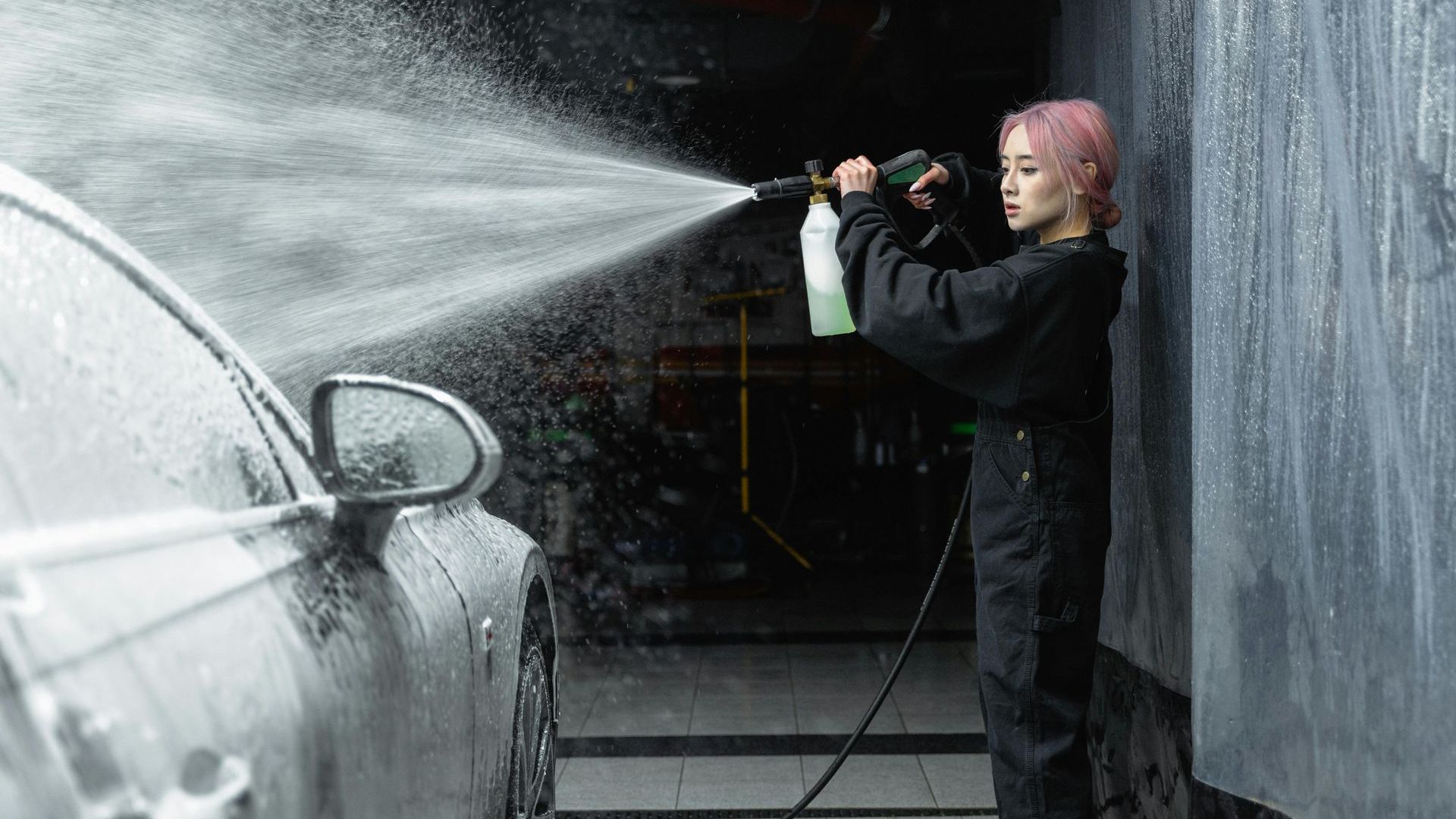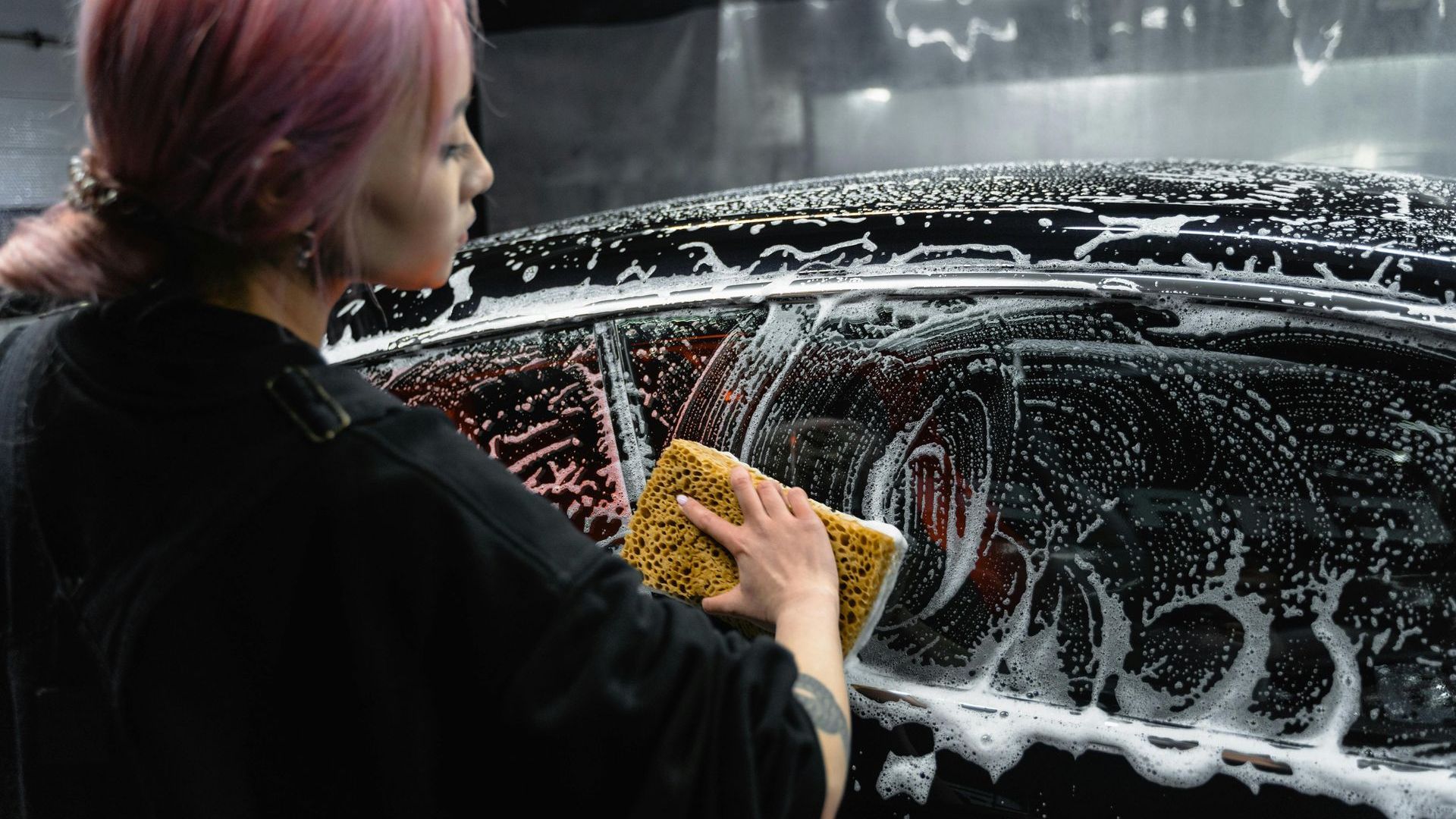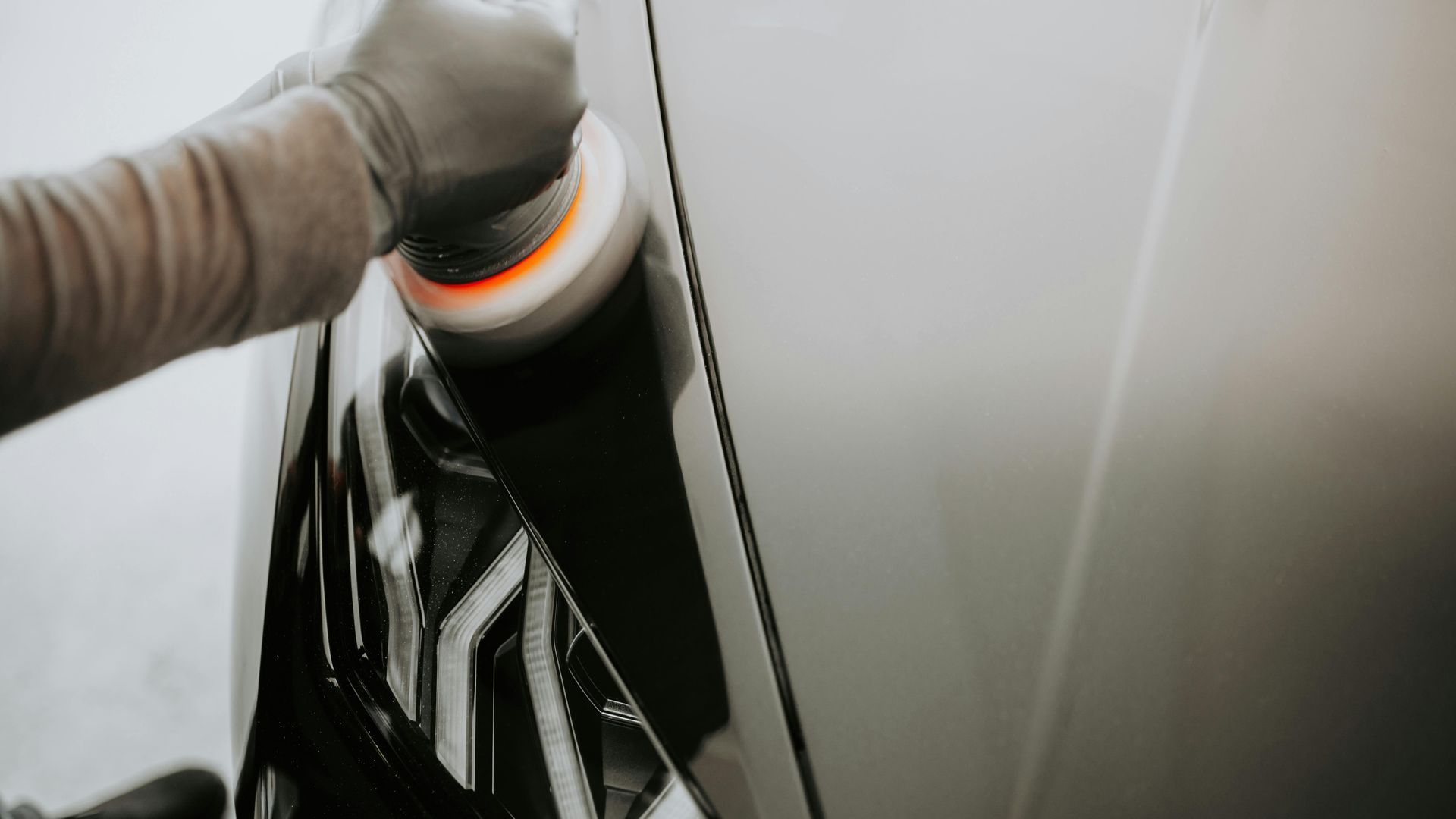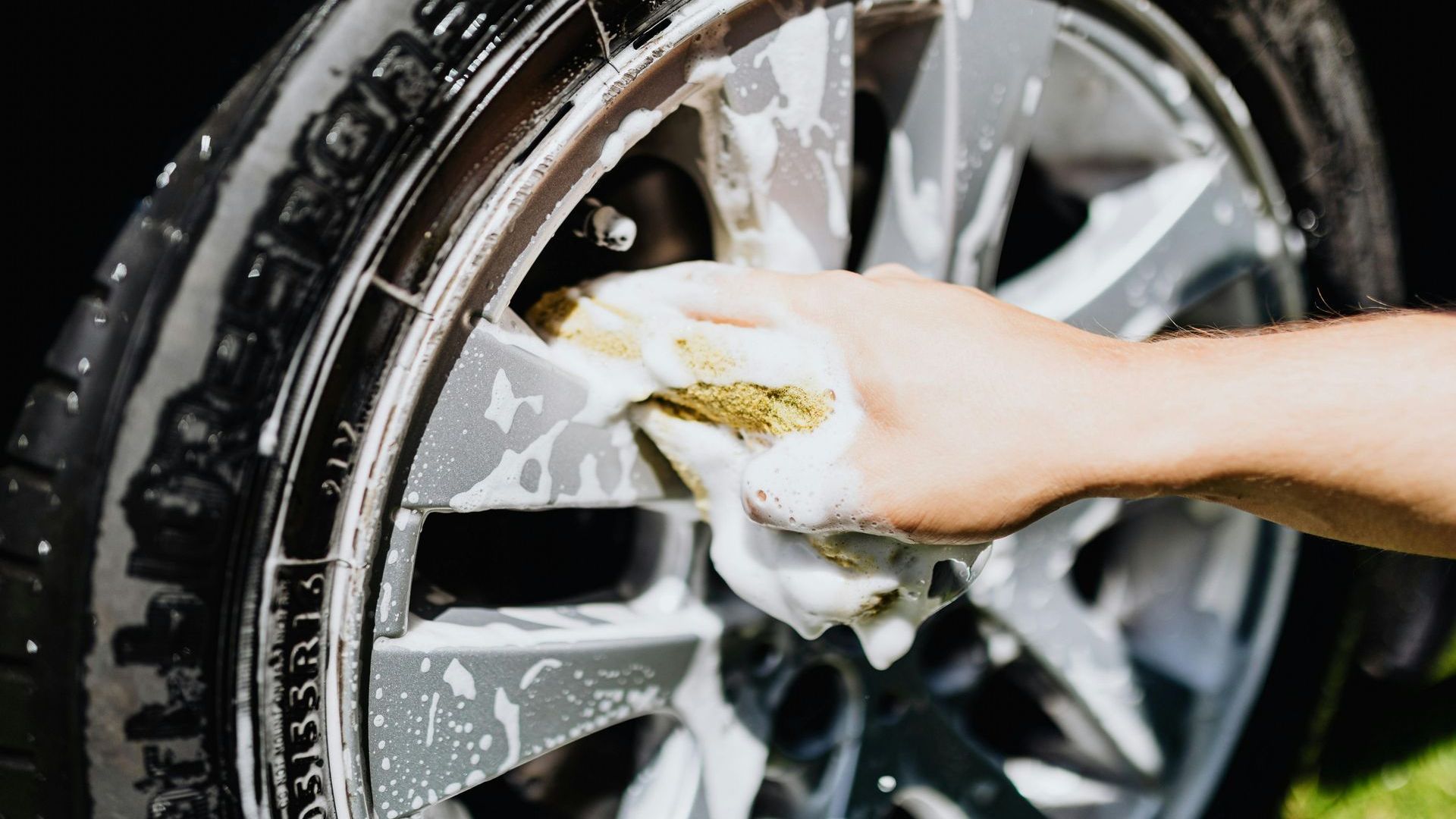Car Detailing Tips & Tricks for a Spotless, Polished Vehicle
Keeping your car looking pristine isn’t just about aesthetics—it also helps protect your vehicle’s value and ensures a more enjoyable driving experience.
March 11, 2025

Our Guide on Car Detailing Techniques
Whether you're a beginner or an enthusiast, this guide will take you through essential car detailing tips and techniques for washing, polishing, waxing, and interior cleaning to keep your ride looking its best.
Unlike a simple car wash, detailing goes deeper. It removes embedded dirt, restores faded surfaces, and protects your car from environmental damage.
Why Should You Care?
✅ Preserve paint quality
Prevents oxidation, fading, and minor scratches.
✅
Maintain a fresh, clean interior
Keeps your cabin free from dust, grime, and odours.
✅
Increase resale value
A well-maintained car attracts better offers.
✅
Enhance driving comfort
A clean, polished car makes every journey more enjoyable.

Essential Car Detailing Tools & Products
Before you begin, having the right tools and products is key. Here’s what you’ll need:
| Tool | Why |
|---|---|
| Microfibre Cloths | For streak-free cleaning without scratches |
| pH-Balanced Car Shampoo | Gentle on paint and wax coatings |
| Clay Bar Kit | Removes deep-seated contaminants |
| Dual-Action Polisher | For that professional-grade shine |
| Tyre and Wheel Cleaner | Keeps rims looking brand new |
| Wax or Sealant | Adds a protective layer and boosts shine |
| Interior Cleaner | Designed for leather, fabric, and plastics |
Step-By-Step Car Detailing Process
1. Pre-Wash: Loosen Dirt And Grime
Start with a thorough rinse to remove loose dirt. Using a foam cannon or pre-wash solution helps break down stubborn grime, reducing the risk of scratches during the wash.
2. The Two-Bucket Wash Method
To avoid swirl marks, use one bucket for clean, soapy water and another for rinsing your wash mitt. Wash from top to bottom in straight-line motions, not circles, to minimise micro-scratches.

Once you've rinsed off your car thoroughly, drying it properly is key to avoiding water spots and streaks.
I always recommend using a large, plush microfibre drying towel. It's super absorbent, gentle on your car's clear coat, and leaves a streak-free finish every time.
3. Decontamination: Clay Bar Treatment (optional)
Even after washing, tiny contaminants like tar, tree sap, and industrial fallout remain. Using a clay bar gently removes these impurities, leaving the surface smooth and ready for polishing.
This can be a lot of work so make sure you clear your schedule for the day and I'd recommend a clay bar treatment every 6-12 months.
4. Car Polishing For A Mirror-Like Finish
Polishing restores your car’s paint by removing light scratches and oxidation.
Use a dual-action polisher with a light-cutting compound for best results. If you prefer to do it by hand, use a microfibre applicator pad.
If you're interested in learning more about polishing your car, here's an easy-to-follow guide on how to polish your car properly. It covers the essentials—from preparation and choosing the right polishing products to techniques that help you achieve a professional-quality finish.
5. Wax Or Sealant: Lock In The Shine
Applying a high-quality wax or ceramic sealant protects your paint from UV rays, water spots, and contaminants. Wax offers a warm, glossy finish, while ceramic coatings provide longer-lasting protection.

Interior Detailing: A Fresh Cabin Every Time
6. Vacuum Everything
Use a powerful vacuum to clean carpets, seats, and even dashboard vents. Compressed air can help reach tight spaces.
7. Deep-Clean Seats & Upholstery
- Leather -
Use a pH-balanced leather cleaner, followed by a conditioner to keep it soft and crack-free.
- Fabric - A steam cleaner or upholstery shampoo helps lift stains and odours.
8. Dashboard, Console & Door Panels
Wipe down all surfaces with an interior cleaner that won’t leave an oily residue. For added protection, use a UV protectant to prevent fading and cracking.
9. Windows & Mirrors: Streak-Free Finish
Use an ammonia-free glass cleaner and a microfibre towel to avoid streaks or damage to tinted windows.
10. Tyre And Wheel Detailing
Clean your wheels with a dedicated wheel cleaner and a soft-bristle brush more often than your car. For an extra touch, apply a tyre dressing to make them look brand new.

Expert Car Detailing Tips
✅ Detail In The Shade
Direct sunlight can cause streaks and uneven drying.
✅
Use Separate Cloths For Different Areas
Prevent cross-contamination between the paint, windows, and interior.
✅
Refresh Between Washes
Quick detailer sprays help maintain shine without a full wash.
✅ Don’t Forget The Engine Bay
A clean engine bay not only looks great but also helps with maintenance.
💡 Don’t Have a Detailing Workshop?
No worries! Our favourite car cleaning hack is to grab a drying cloth and and head over to a DIY car wash like Lush Wash in Nundah. You can utilise their high-pressure water systems, spacious wash bays and eco-friendly products, making it easy to get professional-quality results without the hassle or mess at home. Just don't hog the wash bay!

Car Detailing Mistakes To Avoid
🚫 Using Dish Soap Instead Of Car Shampoo
Strips protective wax and damages paint.
🚫 Skipping The Clay Bar Step
Leaves contaminants embedded in the paint.
🚫 Applying Too Much Wax
More isn’t always better; excess wax is difficult to buff out.
🚫 Cleaning Windows With The Wrong Products
Avoid ammonia-based cleaners that damage tints.
🚫
Neglecting Interior Protection
UV rays can fade and crack dashboards over time.
Final Thoughts
Car detailing doesn’t have to be complicated. With the right techniques and products, you can keep your vehicle looking immaculate and well-protected. Whether you’re preparing to sell your car or just want to enjoy a spotless car, regular detailing is the key.







